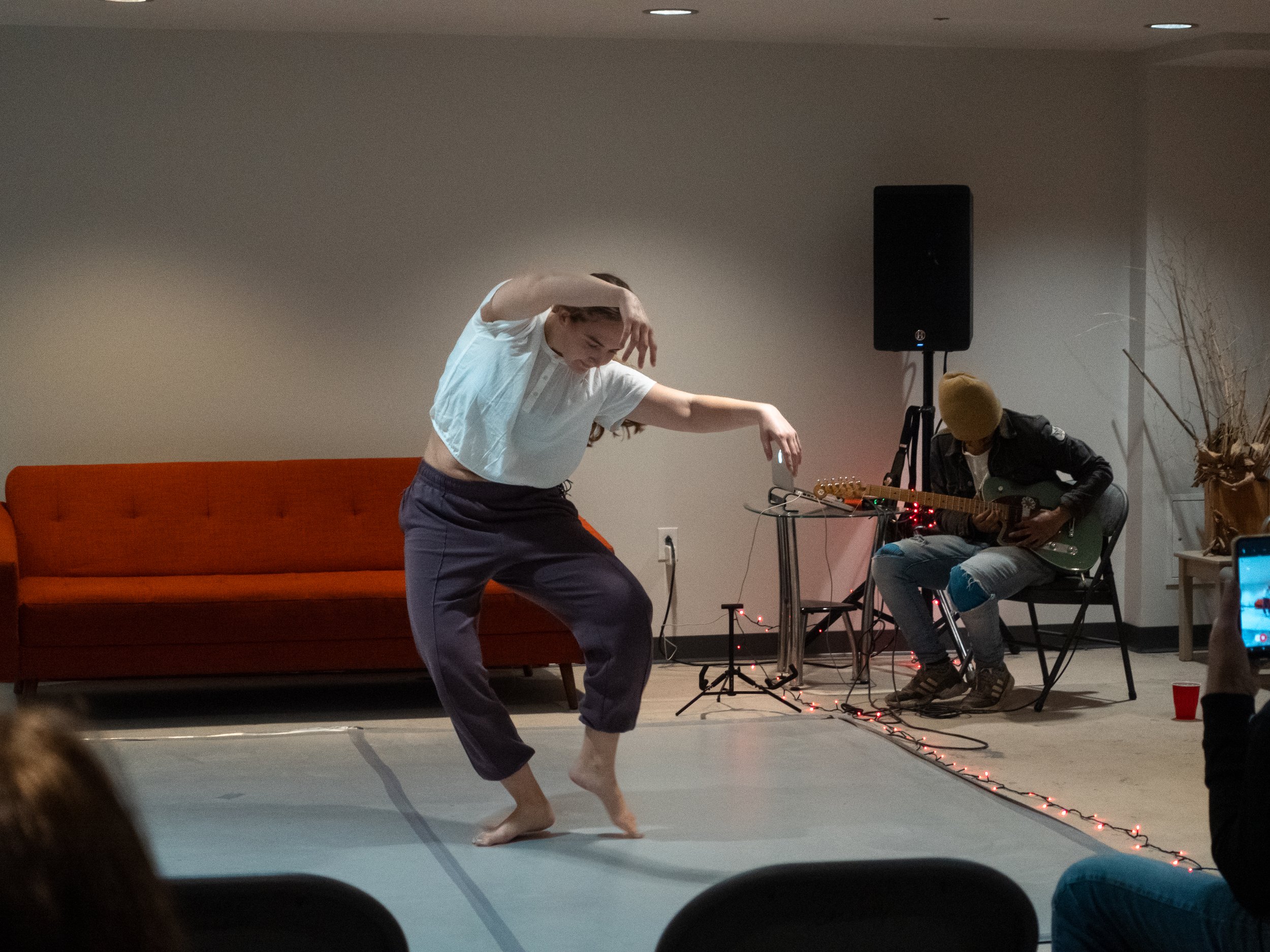Creating a Capstone Combining Art, Research, and Sustainability
Erin Skiff, MSUS+MBA ’24, dances as part of her capstone project examining the emotional and physical impact of air pollution in Braddock. (Photo courtesy of Erin Skiff)
How do you create a graduate-level thesis that combines dance, visual art, and sustainability, all wrapped up with a focus on local community? Ask Erin Skiff, MSUS+MBA ’24.
Skiff tried to fuse those ideas together in a two-part event last month at the Ohringer, an artists’ residence and performance space in Braddock, the once-bustling steel manufacturing town located just east of Pittsburgh. Skiff moved there about three years ago and found herself inspired by the idea of artists instigating change in the community.
“I started out just kind of with this idea,” she said. “I know I’m interested in merging sustainability and art. I’m just thinking, how can I do this? I wanted to make it more … appropriate to where I’m living.”
The idea started as a vague one, Skiff said. Her capstone advisor, Professor Mary Whitney, as well as Professor Deborah DeLong, helped give it shape during discussions held over last summer and fall.
Whitney said that type of self-determined thesis, where the student charts their own path, can result in huge growth for the student.
“If it’s a thing that the person is interested in, they become self-learners,” Whitney said. “They’re going to dig in, they’re going to find out what they need to know, they're going to do it.”
Skiff chose to do an arts-based research project. “There are a few different ways to go about arts-based research, including finding other people to create the art,” Skiff explained. “A thematic analysis was suggested to be used for finding themes within the artwork and translating those themes into a dance piece.”
And that’s what Skiff did. She solicited people to join her in the Ohringer, where participants were asked to create a piece of art—paintings, poetry, even fashion—that reflected their feelings on Braddock’s air quality.
That topic was chosen because U.S. Steel’s Edgar Thomson Works, which is in the neighborhood, has been fined repeatedly by the Allegheny County Health Department for allegedly violating pollution controls, and environmental groups cite it as a major polluter of the region.
In the first part of the project, Skiff received several artistic submissions, which she used to home in on recurring themes: feelings of sadness, concerns about illness, and depictions of inequality were a few of them. She used those ideas as the building blocks for a narrative dance.
“The storyline in my head of how it went was, in the beginning, I’m embodying this industrial powerhouse of a steel plant and the need for that, and the creation of jobs and things that our society needs,” she said.
“Little by little, I wanted to show, OK, now I’m being impacted by these other things,” Skiff continued. The dance depicted health issues, such as breathing problems, that can be caused by pollution. But she also wanted the dance to offer a glimmer of hope for a future with better air quality, increased green spaces, and more sustainable manufacturing processes.
Now in her final semester, Skiff said she needs to do more research, more analysis of the submitted artwork, and more writing before she completes the capstone.
“To see how it’s come together, from the art creation to the actual dance piece— it’s the first time I’ve done something of this length or this detail that’s aligned with sustainability and art merging,” she said. “The whole thing, in a sense, has been great.”
Find out how you can apply to Chatham’s Master of Sustainability and Master of Business Administration (MSUS+MBA) dual-degree program and learn more about the University’s commitment to sustainability at chatham.edu.

